Tuesday☕️

Trending:
- On July 1, 2025, Iraq implemented an internet shutdown across most of the country, except the northern Kurdistan region, to prevent cheating during high school exams, a practice rooted in securing exam integrity. The shutdown was part of a series of daily disruptions during the exam period from June 14 to July 2, 2025, as announced by the Ministry of Communication on May 19, 2025. This tactic, used since at least 2015, has led to over 80 exam-related shutdowns in the past two years, with each typically lasting two hours. The government justifies these measures as essential to curb question leaks, but they have sparked significant controversy due to their economic and social impacts.
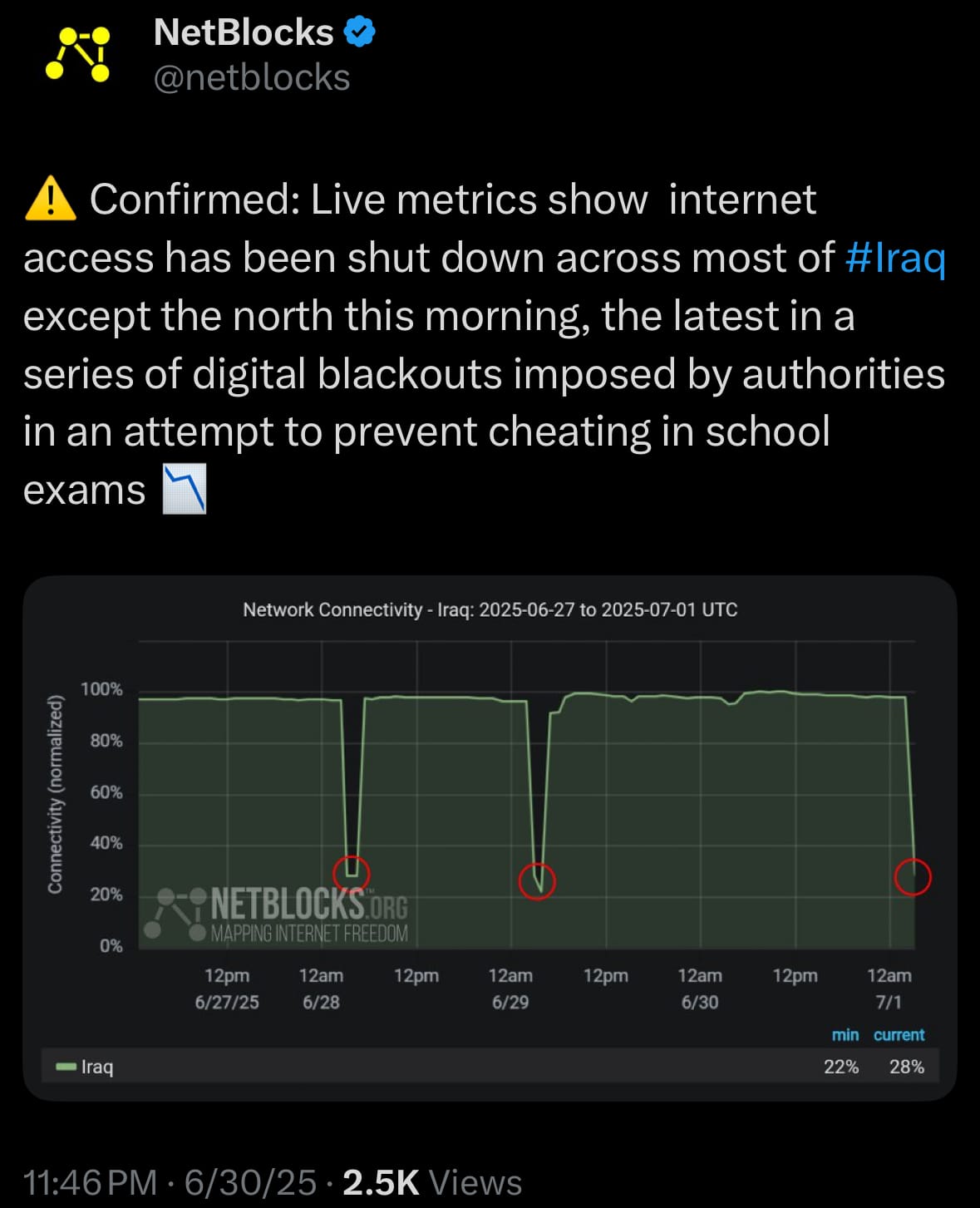
- These shutdowns are enabled through Iraq’s centralized control over its telecommunications infrastructure, allowing the government to order internet service providers to halt connectivity. Public statements, such as those from the Ministry of Communication, frame the disruptions as a necessary response to cheating risks, yet critics argue they violate human rights and lack evidence of effectiveness. With a population of over 45 million, the shutdowns disrupt daily life, costing an estimated USD 4.2 million in GDP per 24-hour blackout and hindering businesses and access to information.
Economics & Markets:
- Yesterday’s U.S. stock market:
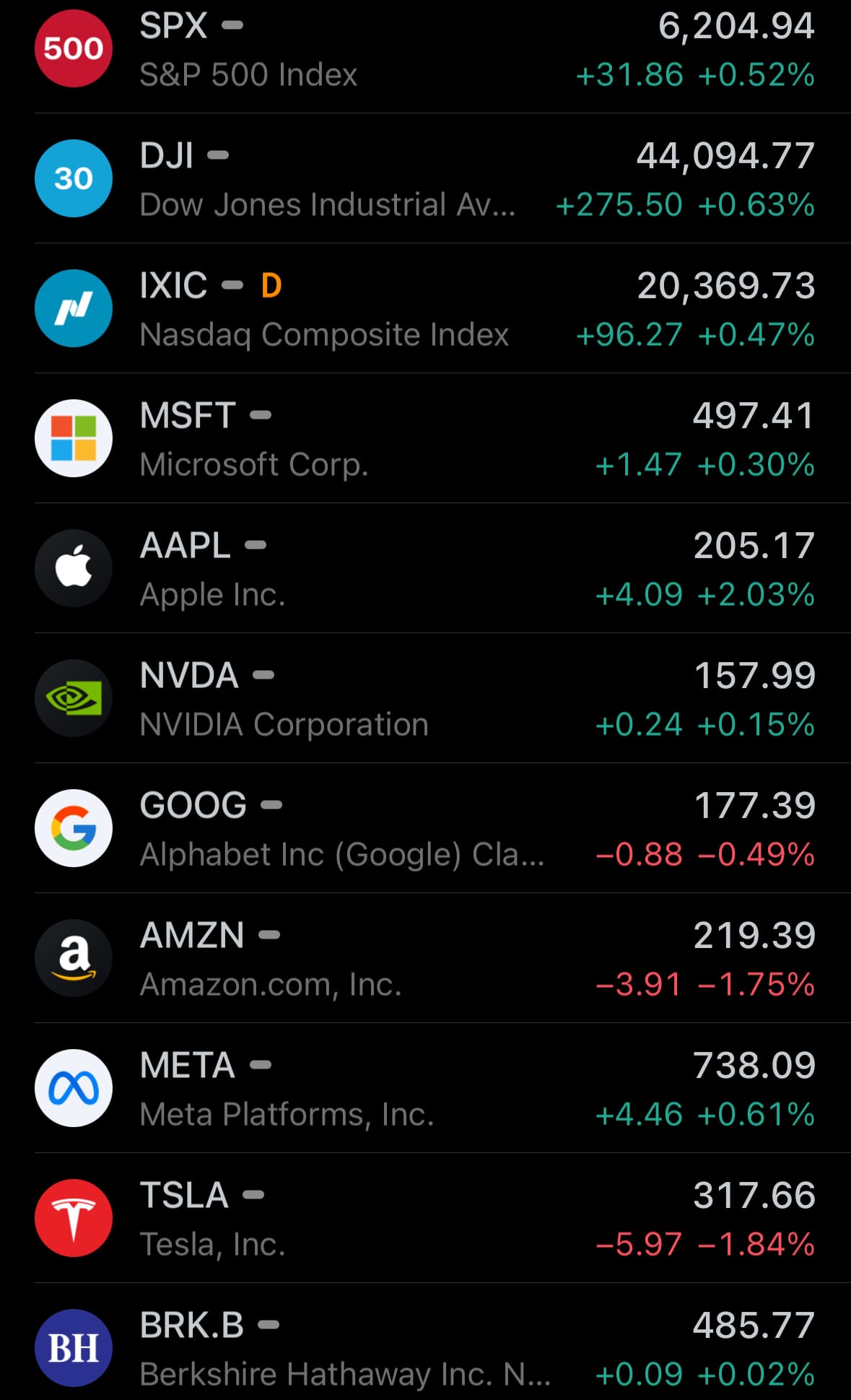
- Yesterday’s commodity market:

- Yesterday’s crypto market:
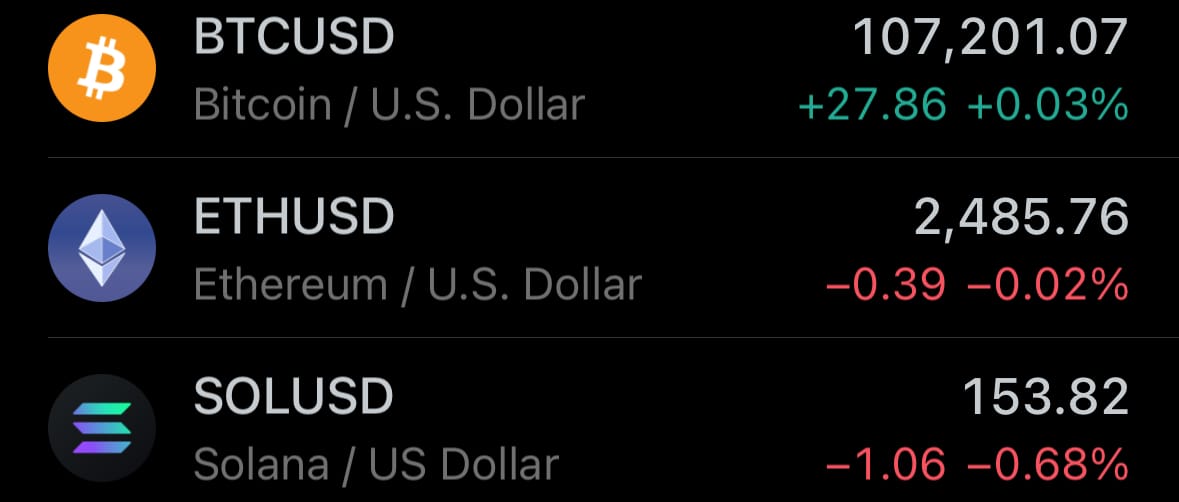
Geopolitics & Military Activity:
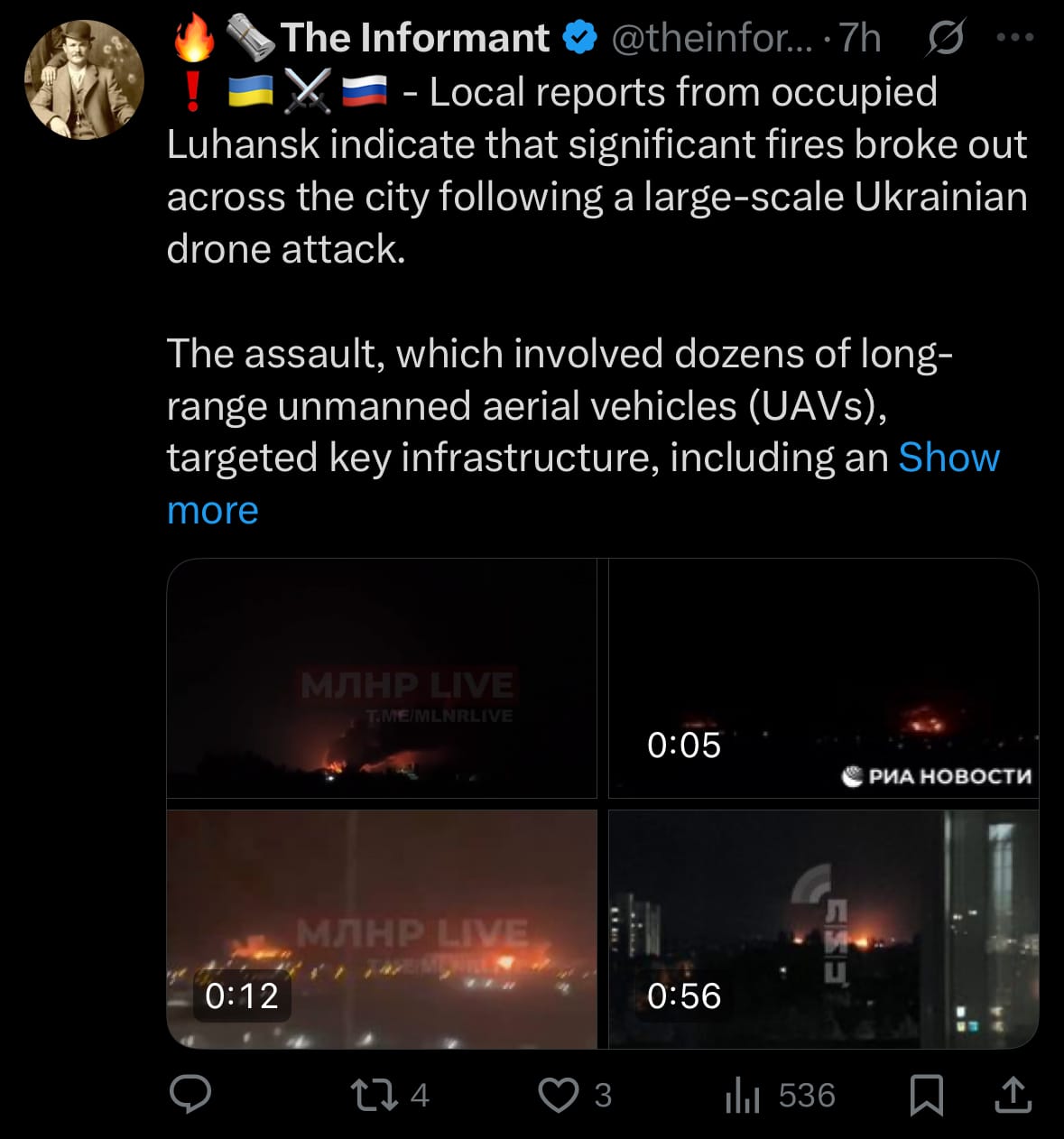
Environment & Weather:
- Yesterday, tourists along Portugal’s central coast observed an unusual natural event: elongated, tube-shaped clouds spanning the sky. The Portuguese Institute of the Sea and Atmosphere (IPMA) identified these as roll clouds, scientifically termed volutus clouds, a rare low-altitude, horizontal cloud formation that appears to rotate along its axis, resembling a cylindrical tube.
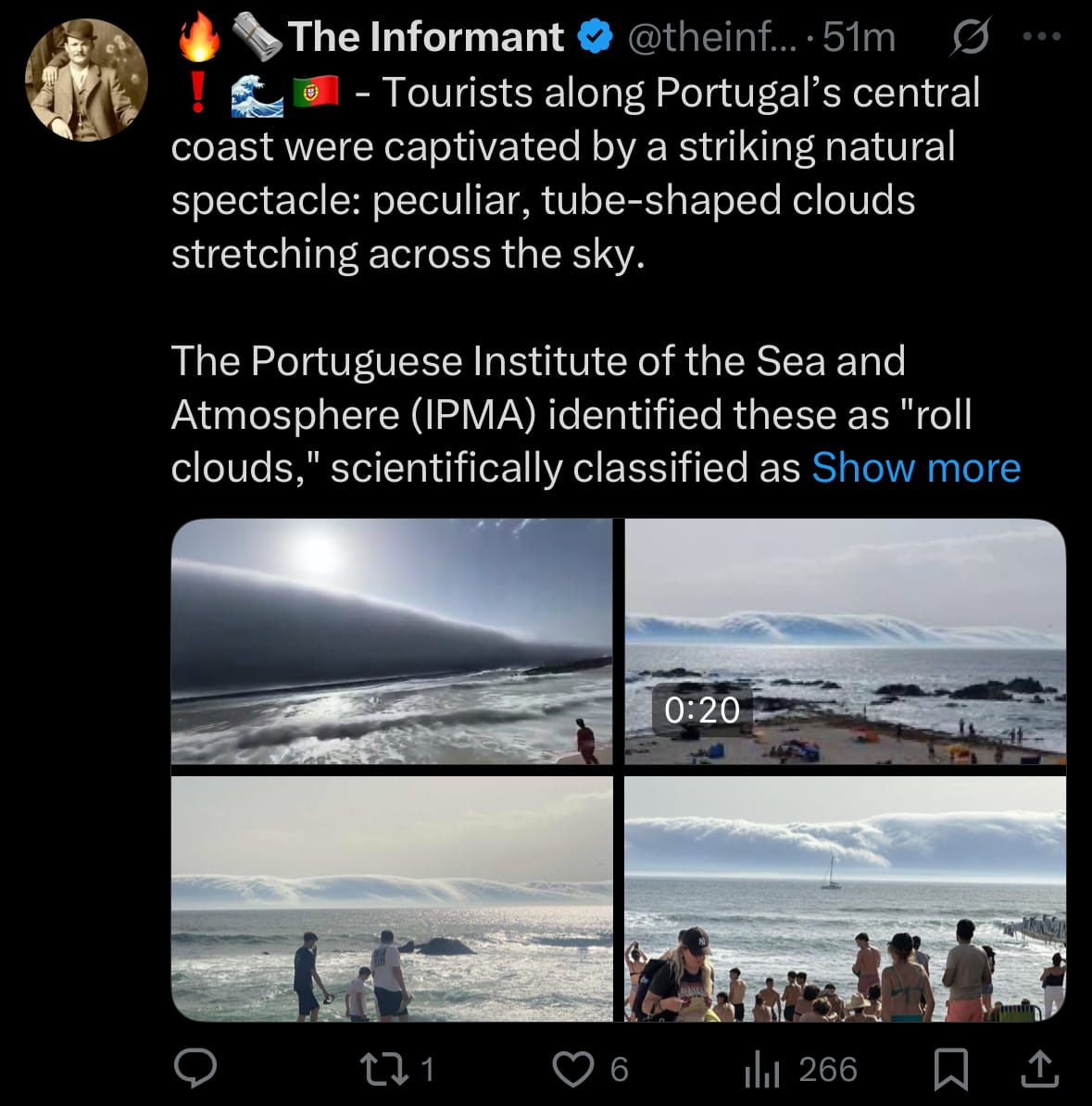
- Documented at three beaches in the region, these clouds were officially recognized in the World Meteorological Organization’s International Cloud Atlas in 2017, noted for their distinct appearance and rarity. IPMA experts explained that roll clouds form under specific atmospheric conditions, often associated with cold fronts or sea breezes, which provide the necessary wind shear and moisture. Harmless to observers, these clouds offered a striking yet transient visual phenomenon for beachgoers.
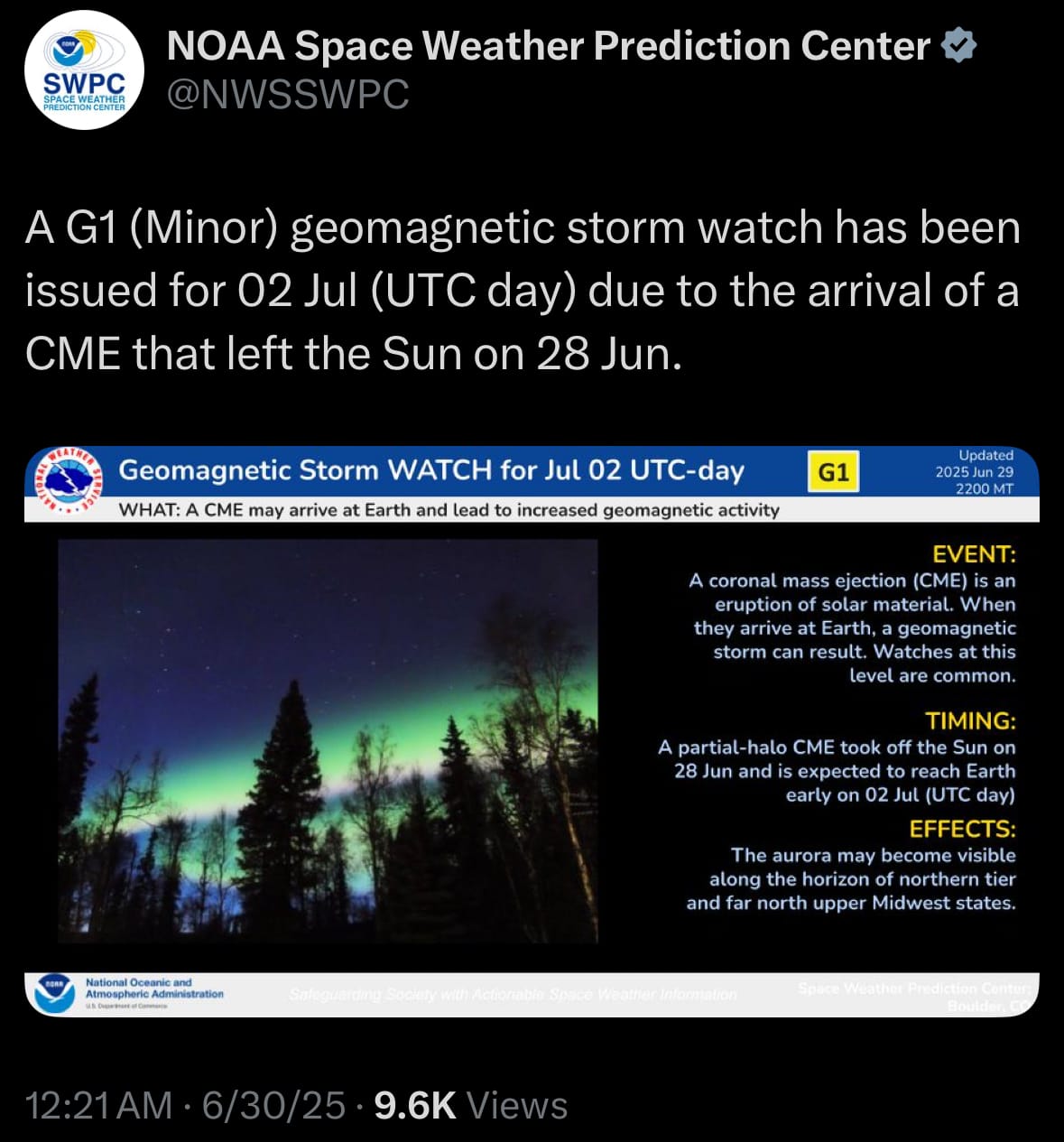
Space:
- Yesterday, June 30, 2025, Netflix and NASA announced a partnership to stream live space exploration content on Netflix, starting this summer. The collaboration will bring NASA+ live programming, including rocket launches, astronaut spacewalks, mission coverage, and live views of Earth from the International Space Station, to Netflix’s global audience of over 700 million subscribers. Available at no additional cost to subscribers, the content aims to make NASA’s work more accessible, fulfilling the agency’s mandate under the National Aeronautics and Space Act of 1958 to share its story widely. Additional programming details and a specific start date will be announced closer to the launch.
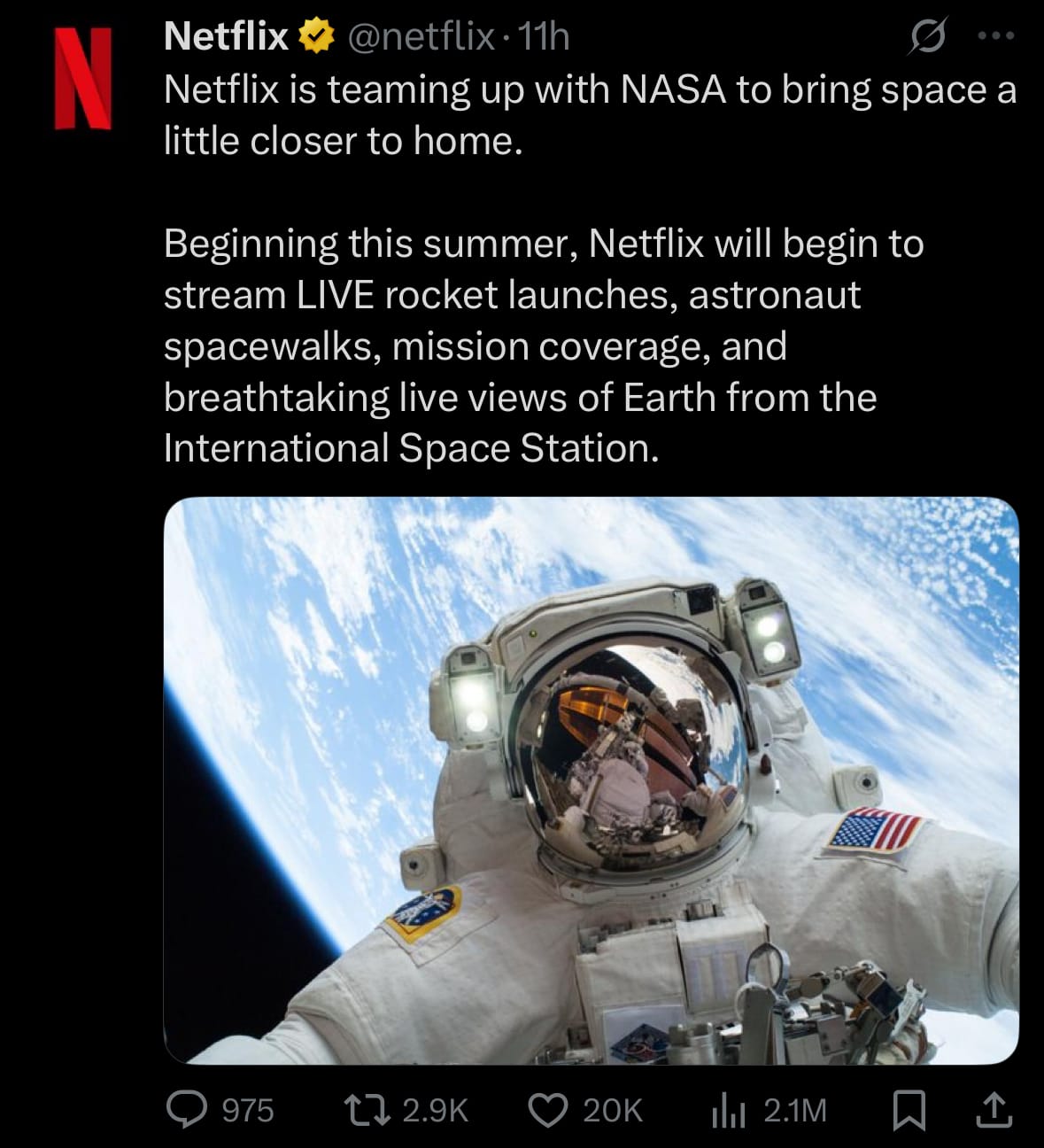
- The partnership seeks to inspire new generations by integrating NASA’s live feeds into Netflix’s platform, alongside its regular series, while keeping the content non-exclusive, as NASA+ remains free and ad-free on the NASA app and website (plus.nasa.gov). This move aligns with growing public interest in space, driven by frequent commercial launches, such as SpaceX’s 81 launches in the first half of 2025.
Statistic:
- Largest public semiconductor companies by market capitalization:
- 🇺🇸 NVIDIA: $3.852T
- 🇺🇸 Broadcom: $1.296T
- 🇹🇼 TSMC: $1.174T
- 🇳🇱 ASML: $315.10B
- 🇰🇷 Samsung: $294.60B
- 🇺🇸 AMD: $233.17B
- 🇺🇸 Texas Instruments: $188.61B
- 🇺🇸 QUALCOMM: $174.86B
- 🇬🇧 Arm Holdings: $171.32B
- 🇰🇷 SK Hynix: $147.43B
- 🇺🇸 Applied Materials: $147.02B
- 🇺🇸 Micron Technology: $139.62B
- 🇺🇸 Lam Research: $124.50B
- 🇺🇸 KLA: $118.45B
- 🇺🇸 Analog Devices: $118.11B
- 🇺🇸 Intel: $98.97B
- 🇯🇵 Tokyo Electron: $86.92B
- 🇺🇸 Synopsys: $79.54B
- 🇹🇼 MediaTek: $69.71B
- 🇺🇸 Marvell Technology: $66.73B
- 🇨🇳 SMIC: $58.59B
- 🇩🇪 Infineon: $55.29B
- 🇳🇱 NXP Semiconductors: $55.19B
- 🇯🇵 Advantest: $55.09B
- 🇺🇸 Microchip Technology: $37.95B
History:
- In the 1830s, Michael Faraday discovered that some materials, like silver sulfide, conducted electricity variably with temperature, laying the foundation for semiconductors. In the early 1900s, quantum mechanics explained their behavior. In 1947, Bell Labs’ John Bardeen, Walter Brattain, and William Shockley invented the transistor using germanium, replacing bulky vacuum tubes. By the 1950s, silicon became the preferred material for its abundance and stability, powering early computers. In 1958, Jack Kilby and Robert Noyce created the integrated circuit (IC), combining multiple transistors on a chip for compact electronics. The 1960s introduced metal-oxide-semiconductor field-effect transistors (MOSFETs), which used less power. In 1965, Gordon Moore’s Law predicted transistor counts would double every two years, driving progress. By the 1970s, complementary metal-oxide-semiconductor (CMOS) technology made low-power, scalable chips the standard for processors and memory.
- In the 1980s, CMOS microprocessors fueled personal computers, and improved photolithography shrank transistors. By the 1990s, sub-micrometer sizes boosted performance. In the 2000s, innovations like high-k dielectrics and strained silicon addressed shrinking limits. Around 2011, 3D FinFETs enabled tiny, efficient chips at 22nm and below, like TSMC’s 5nm chips by the late 2010s. The 2010s saw gallium nitride (GaN) used for high-power devices like electric vehicles and gallium arsenide (GaAs) for 5G. By the 2020s, system-on-chip (SoC) designs powered smartphones, and chiplet architectures, like AMD’s EPYC, improved efficiency. 3D stacking and extreme ultraviolet (EUV) lithography enabled 3nm chips. Research into 2D materials like graphene and neuromorphic computing for AI grew, but silicon CMOS dominates the $600 billion industry, despite challenges like heat and supply chain issues.
Image of the day:

Thanks for reading!
Earth is complicated, we make it simple.
Click image to view the Earth Intelligence System:
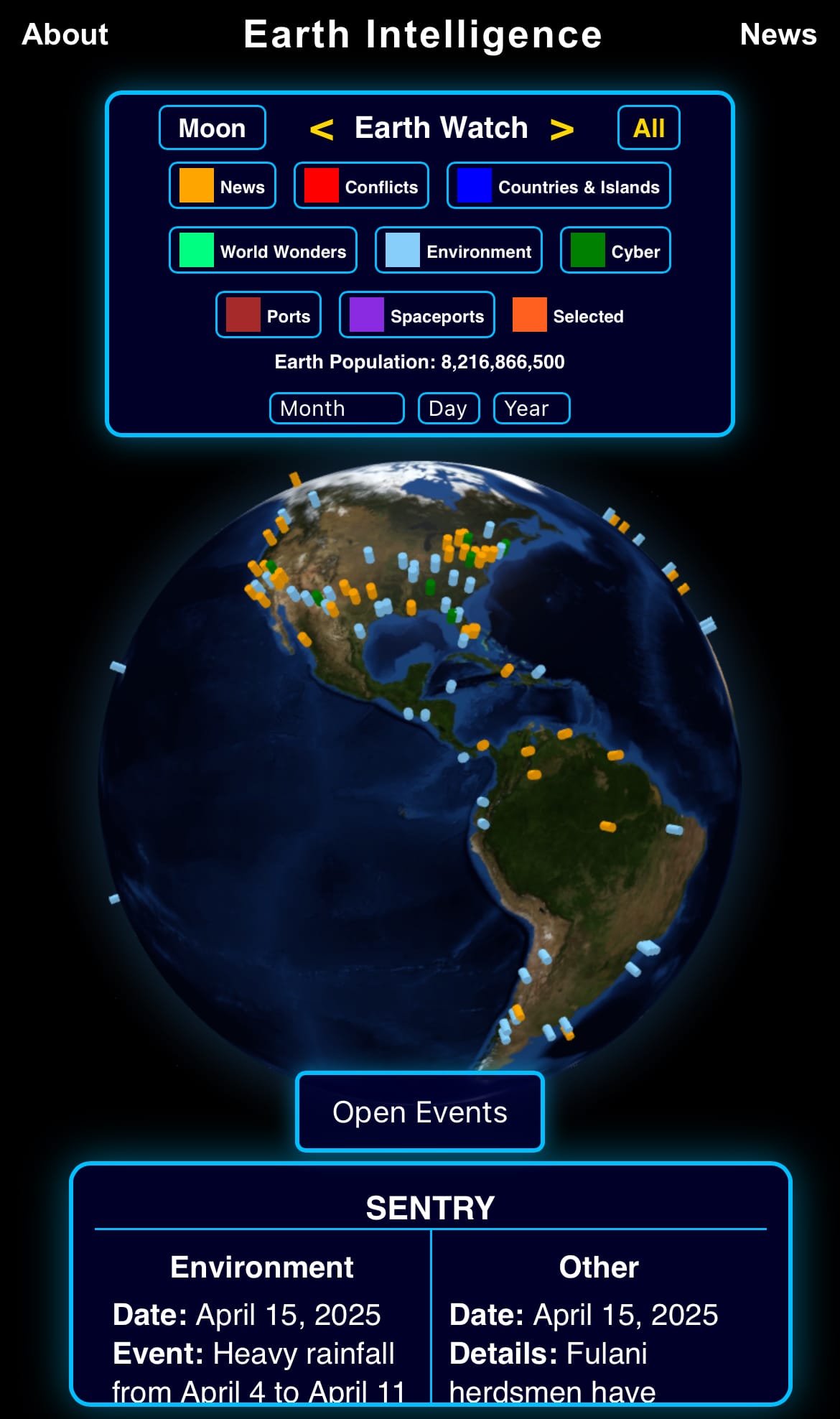


Support/Suggestions Email:
earthintelligence@earthintel.news




